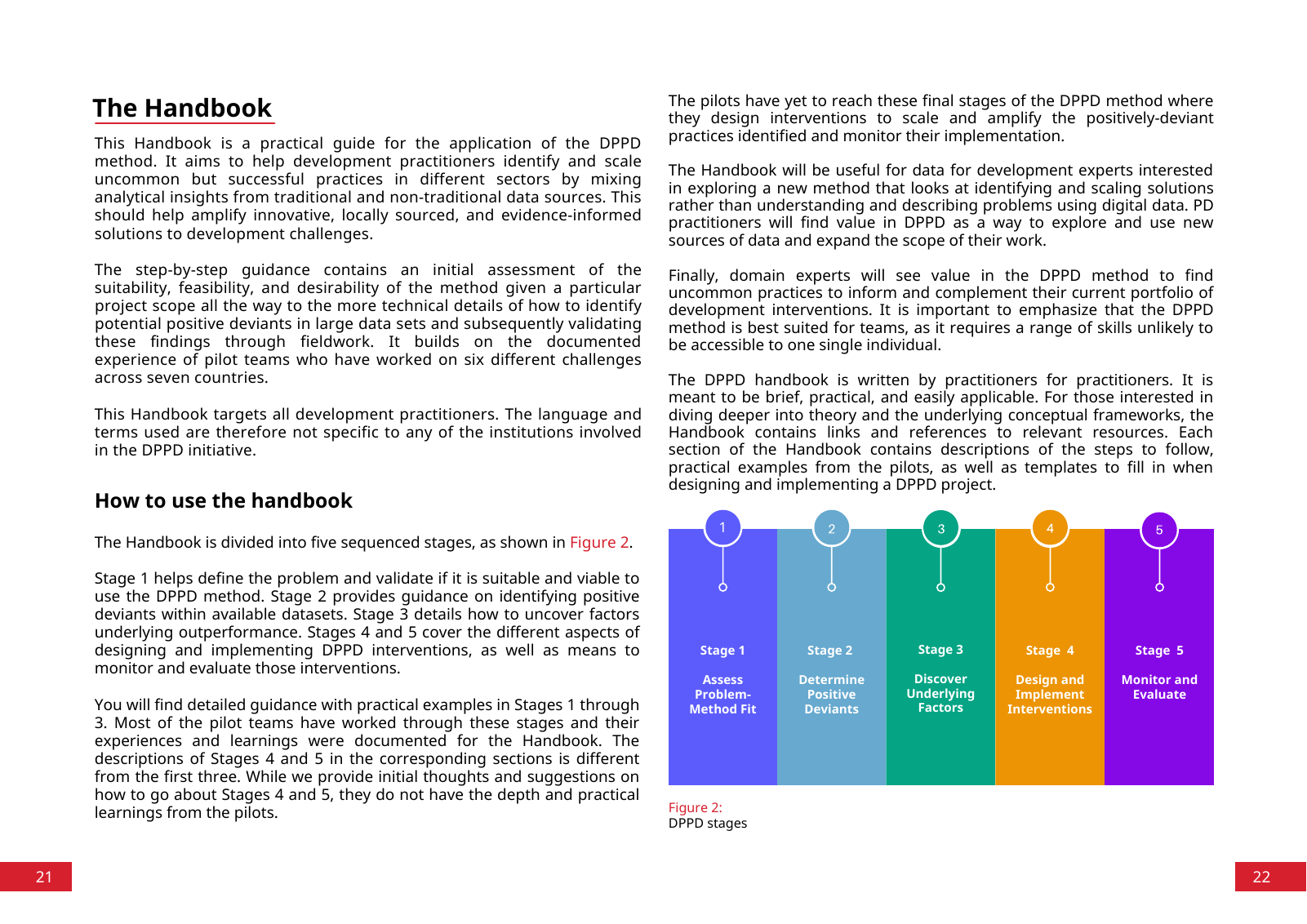The Handbook is divided into five sequenced stages as shown in Figure 2 Stage 1 helps define the problem and validate if it is suitable and viable to use the DPPD method Stage 2 provides guidance on identifying positive deviants within available datasets Stage 3 details how to uncover factors underlying outperformance Stages 4 and 5 cover the different aspects of designing and implementing DPPD interventions as well as means to monitor and evaluate those interventions You will find detailed guidance with practical examples in Stages 1 through 3 Most of the pilot teams have worked through these stages and their experiences and learnings were documented for the Handbook The descriptions of Stages 4 and 5 in the corresponding sections is different from the first three While we provide initial thoughts and suggestions on how to go about Stages 4 and 5 they do not have the depth and practical learnings from the pilots This Handbook is a practical guide for the application of the DPPD method It aims to help development practitioners identify and scale uncommon but successful practices in different sectors by mixing analytical insights from traditional and non traditional data sources This should help amplify innovative locally sourced and evidence informed solutions to development challenges The step by step guidance contains an initial assessment of the suitability feasibility and desirability of the method given a particular project scope all the way to the more technical details of how to identify potential positive deviants in large data sets and subsequently validating these findings through fieldwork It builds on the documented experience of pilot teams who have worked on six different challenges across seven countries This Handbook targets all development practitioners The language and terms used are therefore not specific to any of the institutions involved in the DPPD initiative How to use the handbook The Handbook 1 The pilots have yet to reach these final stages of the DPPD method where they design interventions to scale and amplify the positively deviant practices identified and monitor their implementation The Handbook will be useful for data for development experts interested in exploring a new method that looks at identifying and scaling solutions rather than understanding and describing problems using digital data PD practitioners will find value in DPPD as a way to explore and use new sources of data and expand the scope of their work Finally domain experts will see value in the DPPD method to find uncommon practices to inform and complement their current portfolio of development interventions It is important to emphasize that the DPPD method is best suited for teams as it requires a range of skills unlikely to be accessible to one single individual The DPPD handbook is written by practitioners for practitioners It is meant to be brief practical and easily applicable For those interested in diving deeper into theory and the underlying conceptual frameworks the Handbook contains links and references to relevant resources Each section of the Handbook contains descriptions of the steps to follow practical examples from the pilots as well as templates to fill in when designing and implementing a DPPD project Stage 1 Assess Problem Method Fit Stage 2 Determine Positive Deviants Stage 3 Discover Underlying Factors Stage 4 Design and Implement Interventions Stage 5 Monitor and Evaluate Figure 2 DPPD stages 21 22

Hinweis: Dies ist eine maschinenlesbare No-Flash Ansicht.
Klicken Sie hier um zur Online-Version zu gelangen.
Klicken Sie hier um zur Online-Version zu gelangen.